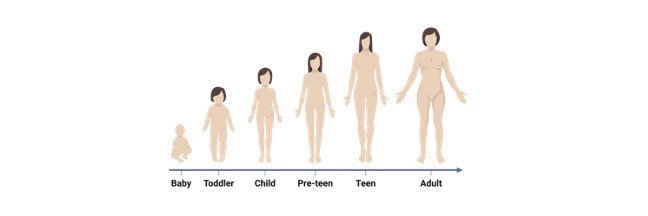What are Growth Factors?
An irreversible, progressive change in a living being for a particular time according to the availabilities of the essential internal and external factors is growth.
In plant’s life term the growth is unlimited and continuous when optimal conditions are present.
Plant growth consists of development of the zygote to seed, on appropriate condition seed germinate to form root and shoot.
Proceeding from then seeds differentiates into different system of a plant bearing different functions.
Development and growth of a plant depend completely upon seed health and the external, internal factors aiding its growth.
Growth factors influence each stage of development by determining the availability of essential nutrients, climate etc., which are external and hormonal synthesis, physiological maintenance, availability of enzymes and substrate for metabolic process etc., are internal.
Growth efficiency is high when internal and external factors are available in essential level and are synchronous with each other enhancing the growth of an organism.
Type of Growth Factors
Growth factors are common for all plant species but the optimal requirement for each species differ making each species unique and distinct.
The common factors affecting the plant growth are divided into;
A. External Growth Factors
(i) Biotic Growth Factors: interaction of plants with other plants their response are all the biotic factors.
(ii) Abiotic Growth Factors: interaction of plants with external non – living factors playing crucial role in plant growth and development
B. Internal Growth Factors
(i) Genetic Growth Factors: the hereditary material made of nucleic acid which assigns different protein molecule for different functions are the genetic factors.
(ii) Physiological Growth Factors: Mainly includes the hormones and enzyme present within the body and the plant requirement.
A. External Growth Factors
External growth factors are components which influence the growth of plants from outside the plant body.
(i). Biotic Growth Factors: biotic factor which influences the plant growth from external sides are just interaction of plants to other plants and competition among themself for the survival of them. These are managed by certain behaviors namely;
Mutualism, Herbivory, Parasitism
a. Mutualism: the interaction between plants for their cooperative mechanism for survival and yielding benefit to each other.
Example: lichens
b. Herbivory: it is the nature of animals where it depends upon plants for survival. When excessive grazing tales place other organism inhabiting the same region has low survival rate.
c. Parasitism: interaction between two organisms where one benefits from the interaction others not and are deprived from nutrition making it hard to survival.
(ii). Abiotic Growth Factors: Factors which does not involve biologically but are essential for growth. Different factors that influence the plant growth are:
a. Climate: each plant has its suitable climate at which they grow well. The climatic factors include: Precipitation, Temperature, Humidity, Solar radiation, Wind velocity and Atmospheric gasses.
1. Precipitation: is of all forms such as Rain, Fog, Haze, Dew, Snow, etc., out of which rain fall is crucial in plant growth. Precipitation is completely dependent on the geography of a region. The slopes of Western Ghats receive high rainfall than the plains therefore considering the rainfall plantation crops are grown at the slopes of Western Ghats. Similarly drier regions support drought resistance plants such as sorghum, wheat, millet etc.,
2. Temperature: temperature is determined by the topography of the region. An ideal range for any plant is between 15° C and 38° C. But for the ideal plant growth each species is unique. The temperature also influences other body activity such as diffusion of the gasses, solubility of different materials, etc.,
3. Humidity: Humidity is the presence of water molecule n the form of water vapor. Higher the humidity lowers the rate of transpiration. Hence water accumulates causing decay of plants.
4. Solar Radiation – Light: Respiration is the process where the CO2 consumed to produce O2. This takes place by the process called photosynthesis. Incident of light is essential for synthesis of energy for plants survival. The radiation controlled the situation by determining the temperature of the region.
5. Atmospheric Gasses: in atmosphere the ratio of Carbon, Oxygen and Nitrogen must be balanced properly other wise imbalances can causes destruction to entire living system.
b. Edaphic Growth Factors: is noting but the specificities of soil for plant growth. The soil has several criteria namely: soil moisture, air, temperature, pH, mineral content, organic content and microorganism.
1. Moisture content makes the availability of nutrients to the plant easily attainable.
2. Soil Air provides aeration which removes any accumulation of undesirable gases, remove the dampness of the soil thereby providing an ideal environment which is free from infections.
3. Temperature, affects the physico chemical process taking place inside the soil and keeps the microbial activity under control and prevent microbial accumulation
4. Soil Organism, microbial growth is well associated with root nodules present in the plant where they fix atmospheric nitrogen to fulfil the nitrogen need for plants.
5. Other, factors associate well with the above factors provide an ideal internal environment for plant growth.
B. Internal Growth Factors
Factors which are present inside a plant body which are responsible for the growth of the plant.
The internal factors are a. Genetic factors and b. Physiological factors.
i. Genetic Growth Factor: the hereditary material becomes responsible for the blueprint of the organism, its productivity, survival capacity and others. In plant breeding technology new methods are employed to produce an ideal variety for better yield. Such efficiencies and capacities are present inside the cell and does not require other factors to promote it.
ii. Physiological Growth Factor: physiological factor is the hormonal and other factors which influence the plant growth. The growth of plants are dependent on the GROWTH REGULATORS, which are hormones which promotes or inhibits the growth.
These are done by 5 major hormones:
a. Auxins: enhance the cell elongation, enlargement, phototropism, geotropism, flower, root initiation, development of flower, root, fruit seeds etc.,
b. Gibberellins: affects the enlargement of organism, resisting the growth of plants as a whole.
c. Cytokinin: Cytokinin works along with auxin helps in cell enlargement
d. Ethylene gas: they diffuse easily throughout the body and ripens the fruit, seeds and are present in meristematic tissues,
e. Abscisic acid: intervene the growth promoting effect by reducing the growth promoting factors.
Growth Factors Citations
- The Pivotal Role of Ethylene in Plant Growth. Trends Plant Sci . 2018 Apr;23(4):311-323.
- Auxins as one of the factors of plant growth improvement by plant growth promoting rhizobacteria. Pol J Microbiol . 2014;63(3):261-6.
- Cytokinin signaling in plant development. Development . 2018 Feb 27;145(4):dev149344.
- Plant abiotic stress response and nutrient use efficiency. Sci China Life Sci . 2020 May;63(5):635-674.
- Brassinosteroids: Multidimensional Regulators of Plant Growth, Development, and Stress Responses. Plant Cell . 2020 Feb;32(2):295-318.
Share









